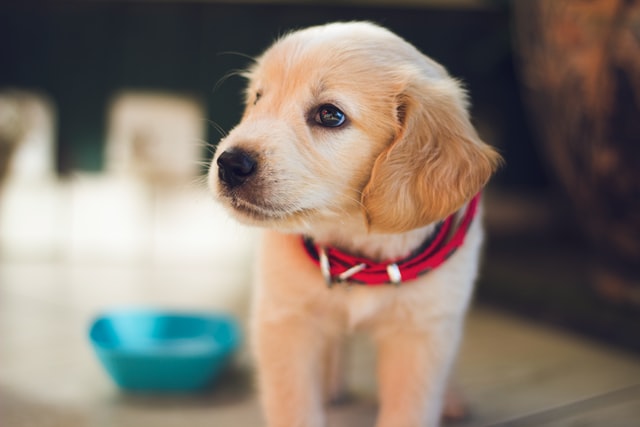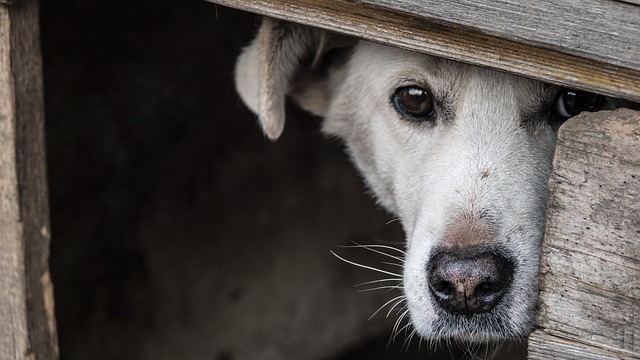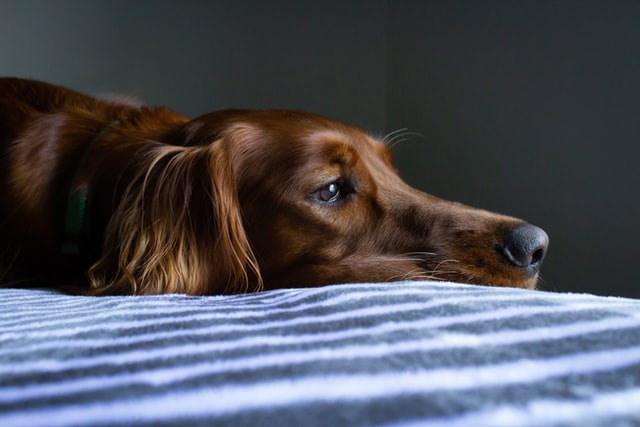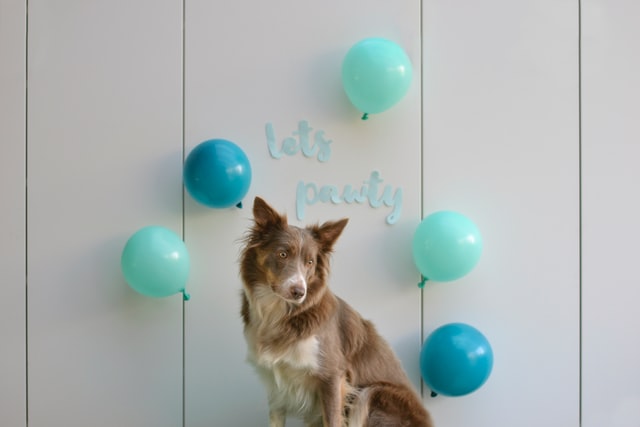10 things you didn’t know could trigger dog anxiety
Anxiety is a feeling that can affect anybody, dogs or people, for any reason.
Our canine companions can be especially sensitive to certain triggers that can cause anxiety and unwanted behaviors.
Sometimes it’s a matter of personal, negative experiences and sometimes it’s simply just irrational.
If your dog has been acting more anxious than usual, or maybe you’re just trying to avoid issues, this article is the one for you!
Keep scrolling to learn more about what could be triggering your dog’s anxiety and how you can help.
#1 A Change In Routine
Routine is important to dogs and people.
It helps to establish a wake up time, meal schedule and daily exercise with your companion and deviating from what they know can cause emotional dismay with your pet.
Even something as small as skipping their usual walk around the neighborhood can result in anxiety for your dog.
Or perhaps you have a friend from out of town staying with you for a week - this will create some anxiety because their normal routine is shaken up.
Dogs that are particularly prone to anxiety can show quite an emotional response whenever that routine is broken, sometimes having accidents, tearing up the owner’s belongings or even moping around the house.
What To Do:
Keep to your dog’s routine as much as possible.
If you must deviate from that routine, then do the best you can to get back into it.
If you cannot go back to what they once had, then stay patient as they adjust to their new daily schedule.
#2 New Addition To The Home
This subject also plays a little into the change in routine that can trigger canine anxiety.
A new addition - whether it’s a partner, baby or new pet - or anytime that there is a change to the number of people or animals in the home, there is always a chance for some anxiety.
Dogs get used to their family members.
Changing that can create a world of stress for dogs, especially those that aren’t great at being social and outgoing.
Children also make a lot of noise and bring a new element of stress into the home: the owner’s stress from the new baby and the crying.
Also, babies don’t just keep the human family members up at night, but they can keep the dog up too!
If a new partner has entered the fray, it could be that the dog isn’t wanting to share their owner’s attention with this new human all of the time.
The same goes for bringing a new pet into the home as well.
Dog’s don’t always like to share, especially when they’re the jealous type!
What To Do:
- If the new person in your home is an adult, then you should ensure that your dog has already met this individual before moving day.
- If the new member is a baby, then allow the dog to enter the nursery and see the crib and other baby furniture.
Then once you bring the baby home, you can allow them to sniff the car seat (and baby if you're comfortable with that).
The idea is to desensitize your dog from the idea of the new person that is going to be in the home.
If an animal is moving in, always ensure that you can have a safe introduction, especially when it’s another dog.
No matter what it will probably take some time for your dog to grow used to its new friend, however it is important to always monitor their interactions together until you can be certain that they will get along nicely.
Do not have food, treats or toys in between the two dogs until they can be trusted together.
#3 You Are Moving To A New Home
In general, you can expect many dogs, especially those that are anxious, to find moving to be a stressful event.
Moving can be super exciting, especially to people.
Dogs don’t always look forward to this change in routine and surroundings.
Going to a new home means a new territory to establish, new creatures and neighboring dogs.
If you went from living in a quiet neighborhood with plenty of room to roam and moved into a little apartment, most dog’s aren’t going to be happy.
What To Do:
Accept that your dog may take a few days or a week to grow used to the change in their surroundings.
Have plenty of items that are from the home they remember - such as toys and beds to help them feel more comfortable.
Take them for a visit (if you can) before moving in.
#4 You Make Leaving The House A Big Deal
Drawing a lot of attention to yourself when you are getting ready to leave can be very stressful to your dog.
If you think that your dog is going to hate when you leave, so you hug and kiss them and give them lots of attention just before walking out the door, imagine how upset they’re going to be after that.
What To Do:
The best thing to do to combat anxiety with your dog when you leave the house is to simply grab your things and leave.
The more calm you are when you exit the home, the more calm your dog will be.
#5 They’ve Switched Owners A Lot
Nothing is more sad than seeing that a shelter pet has been adopted and returned several times.
If you bring home a dog that has had many owners over a short time frame, it is likely that they will show some signs of anxiety.
This is not completely strange considering moving from home to home would stress out anyone in that situation.
What To Do:
If this is your dog, then the best thing to do is to show them love and a place of their own.
These dogs can benefit from having a kennel or a crate for them to spend time in and destress from daily activities.
Even dogs with separation anxiety benefit greatly from being crate trained as it is safer for them and your home when they are not left out to give into their undesirable anxiety behaviors.
#6 Strange Noises
Strange noises can be particularly stressful, especially when they are happening close to your home.
These noises can range from construction sounds to loud music across the street to your neighbors roof being replaced.
No matter what, this change in their surroundings in a way that is ominous is confusing and induces anxiety in many dogs.
What To Do:
If your dog is being triggered by some loud noises that are going on outside, the best thing to do is to try and distract them with something fun and entertaining.
Also, make the crate super cozy and appealing to stay in.
#7 They Are Sick
When a dog is sick, it is common for this to trigger some amount of anxiety. Ironically, this stress and anxiety from being sick will most likely suppress their immune system further.
If you notice anything off, it is important to take action and get your dog into the vet right away.
What To Do:
The next step to addressing an illness in your dog is to… well, take them to the vet!
They will know what to do!
#8 They Are Injured
Pain is most certainly going to cause anxiety and stress in your dog.
If you notice a limp, you can certainly see if it subsides with a day or two of rest, but in reality, they probably would do best with some veterinary attention and pain meds.
What To Do:
Again, the veterinary professionals will know exactly what to do.
Even a minor injury is something that should be addressed, as continued pain and inflammation can make a small issue something much bigger in the future.
#9 Family Member Has Moved Out
Depression and anxiety is common in dogs when they have a beloved family member move out.
This happens often with kids that have grown up and are getting ready to start the next phase of life: college.
Dog’s don’t understand and will show their sadness and anxiety by moping around, being destructive or acting depressed.
What To Do:
The best way to address this is to simply let it ride its course.
Sometimes letting the dog stay in the bedroom of the family member that is gone will help.
Having a blanket or t-shirt with that person’s scent can also bring the dog comfort.
#10 Traveling
Traveling is a lot for dogs to handle.
While so can do great going on adventures, most dogs would probably prefer to stay home where it’s comfortable.
Stress from traveling is common and anxiety behaviors such as depression and fear can come from visiting places that are intimidating.
Not to mention traveling by airplane. While the cargo hold is safe for dogs, it’s certainly still pretty scary and loud.
Dogs that have been on a plane will often show signs of stress and anxiety afterwards.
What To Do:
If you try to take your dog on a trip and you realize that it inflicted more anxiety on them than it did enjoyment, then consider leaving them at home next time.
If they must travel because you are moving, then try to make it as comfortable and stress free as possible.
Consider asking your veterinarian for something that can “take the edge off” for your dog while they’re on the road or in the air.





![[Tested & +20 hrs] Anti Anxiety Music for Anxious Dogs](https://doghealthknowhow.com/wp-content/uploads/2021/11/Anti-Anxiety-Music-for-Anxious-Dogs-768x529.jpg)